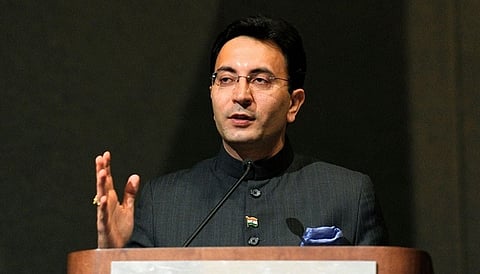
- News Updates
- PSU Watch
- Defence News
- Policy Watch
- हिन्दी न्यूज़
- Jobs Watch
- States News
- Event News

New Delhi: Around 99 percent of mobile handsets being used in India are domestically manufactured, Minister of State for Electronics and Information Technology Jitin Prasada informed Parliament on Wednesday.
The domestic electronics production has grown multifold over the past decade, from Rs 1,90,366 crore in FY'2014-15 to Rs 9,52,000 crore in FY 2023-24 with a compound annual growth rate (CAGR) of more than 17 percent, he said.
"India has now reached a stage where 99.2 percent of mobile handsets being used in India are domestically manufactured. Also, India has become a mobile exporting country as compared to a mobile importing country in FY 2014-15, when almost 74 percent of all mobile phones sold in India were imported," the minister said.
Citing industry estimates, he said approximately 25 lakh employment (direct and indirect) has been created in the electronics sector.
The Government has approved the Semicon India programme with a total outlay of Rs 76,000 crore for the development of the semiconductor and display manufacturing ecosystem in the country.
Besides, the Production Linked Incentive Scheme (PLI) to encourage large-scale electronics and IT hardware manufacturing and the Scheme for Promotion of Manufacturing of Electronic Components and Semiconductors (SPECS), among others, are also in place.
"India's electronics manufacturing faces a cost disability vis-a-vis competing nations due to several factors which, inter-alia, include higher capex requirement, higher gestation period, scale of production, technology transfer and competing with the global players on quality as well as price," Prasada said.
(PSU Watch– India's Business News centre that places the spotlight on PSUs, Bureaucracy, Defence and Public Policy is now on Google News. Click here to follow. Also, join PSU Watch Channel in your Telegram. You may also follow us on Twitter here and stay updated.)
